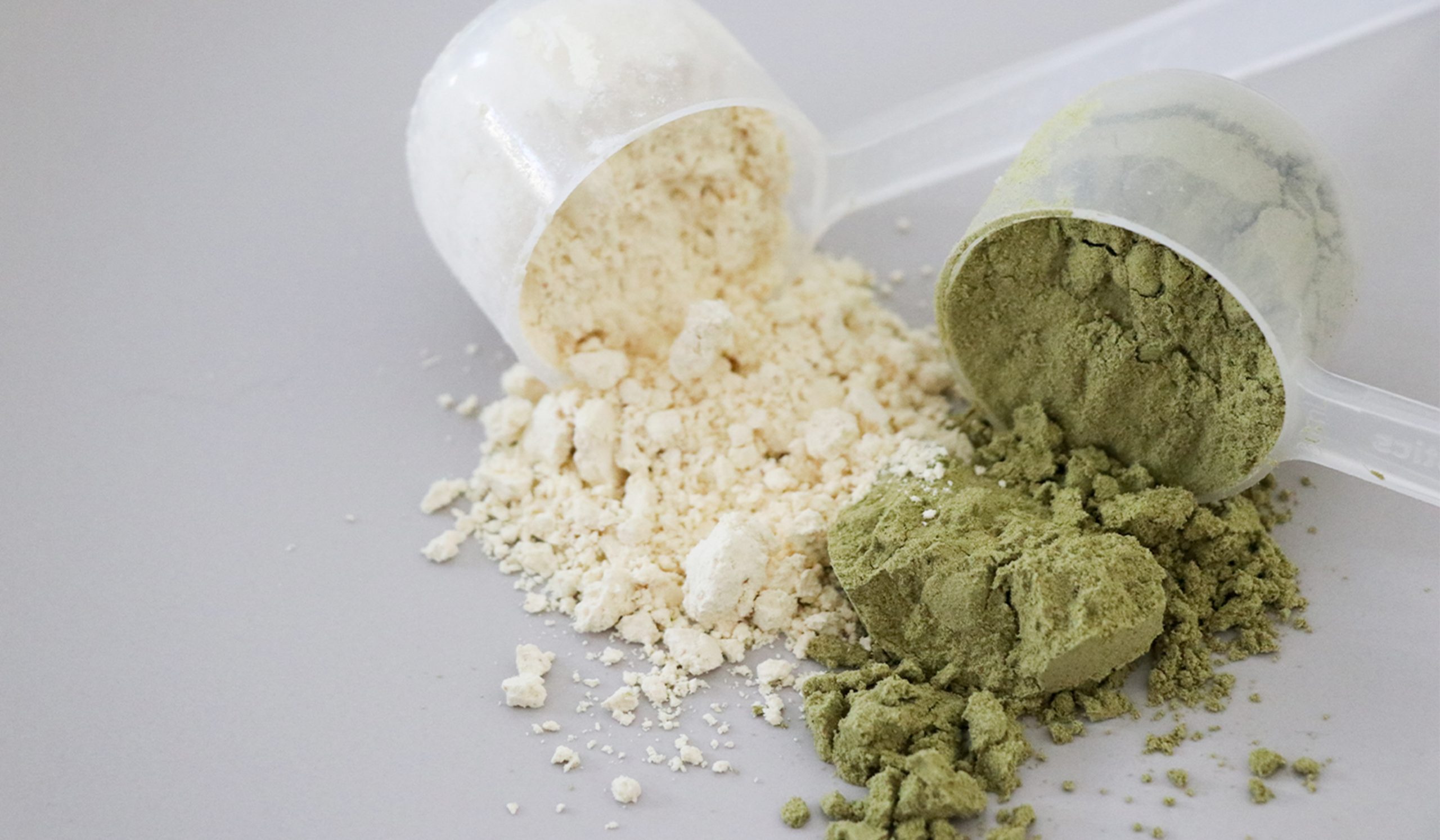While some folks consider protein powders to be a processed food (because technically they do undergo a fair amount of processing to be blendable and tasty), I support their use in a real food diet for folks who are struggling to get enough protein in their diet or have high protein needs. They are also an easy way to add protein to a smoothie or post-workout snack (click HERE to learn how to build a healthy smoothie).
Like anything else in the nutrition world, there are high quality protein powders on the market, and there are also junky products that are loaded with sugar and unnatural ingredients. Being a savvy protein powder shopper will help to avoid added junk, chemicals, and sugar so you can drink your protein with confidence and a happy belly. Here’s the quick and dirty on choosing clean protein.
-
Choose a Protein Source that suits your needs:
Whey protein is easy to find, well absorbed, and has a good price point. It is also a complete protein. This means that it provides all nine of the “essential” amino acids you need to synthesize protein, but that your body can’t make on its own. However, whey is derived from milk, so for some people with dairy issues, those who are strict paleo or AIP, or vegans it may not be a good choice. The same goes for casein protein. My favorites: SFH, Tera’s Whey, Ascent
Vegan protein powders may be derived from any of the following plant-based protein sources: soy, hemp, pea, rice, pumpkin, coconut, quinoa (and more!). Many vegan protein powders contain a combination of several of these. Be sure to read labels carefully to make sure that you aren’t consuming something that you may be intolerant of. My favorites: Tera’s Whey coconut and pumpkin protein
Collagen peptides come from the connective tissues (usually the hides) of cattle. Collagen is a great source of protein, and when in the peptide form, is tasteless, odorless, and colorless. It can be mixed in to anything hot or cold without changing the taste or consistency of that product. Some people even add it to their coffee. Collagen peptides are not a complete protein, meaning that it is missing one of the amino acids that our bodies can’t manufacture, so if this is a concern, mix with whey protein or go with another protein source. If you are eating a diet that includes other complete protein sources, having some collagen peptides every day shouldn’t be a concern. My favorite: Vital Proteins Collagen Peptides
Egg protein powders are made from dehydrated egg whites. They may be a good option and are considered a complete protein, but can be pricey and should not be consumed by folks with egg intolerances, or by vegans.
-
Read the ingredients:
Protein powders don’t need to contain anything more than the protein itself. Pure, single ingredient protein powders do exist, but most of us are looking for some flavor and even a little bit of sweetness to compliment (or mask) the other stuff we are jamming into our smoothies. When shopping for a flavored protein powder, most products contain four basic ingredients. If your protein powder contains more ingredients than what is listed here, be suspicious and consider a simpler formulation:
- Protein: May be a concentrate or isolate. May be whey, casein, soy, hemp, pea, rice, pumpkin, coconut, goat’s milk, collagen peptides, or egg protein.
- Flavoring: Opt for products that contain actual food sources for flavoring, such as organic cacao or vanilla bean. Avoid products that contain “natural flavors” or “artificial flavors”. Be very suspicious of products that come in flavors like “cake batter” or “cookies and cream” – while these sound tempting, they are likely full of chemicals that give them their flavor.
- Sweetener: If you choose a sweetened protein powder, it should contain 2g or less of sugar. Preferable sweeteners are organic stevia or organic cane sugar. Avoid artificial sweeteners such as sucralose, aspartame, and saccharin.
- Emulsifiers: Some protein powders contain an emulsifier, which is a compound that is added to aid in blendability and texture. Emulsifiers are not necessary, but they are often included, even in the higher quality products. Common emulsifiers are soy lecithin and sunflower lecithin. Avoid soy lecithin which has to be processed chemically in order to be produced. Organic sunflower lecithin can be produced mechanically, not chemically, and is a better option of the two.
If your protein powder contains more than these four ingredients, do some research into what those other ingredients are before you decide if it is a product that will benefit your health.
Some protein powders contain other ingredients such as synthetic vitamins, probiotics, and herbs. I generally recommend avoiding these combo products as they may contain ingredients that you don’t need or won’t tolerate. If you have a reaction after using them, you won’t know what you are reacting to because there’s so many ingredients that could be to blame. Get your vitamins from your food, and if you need a multivitamin or probiotic, choose a high quality product and take separately.
I hope this helps you on your search for the perfect protein powder! Happy blending! Drop a note in comments to let me know your favorite – and why!



